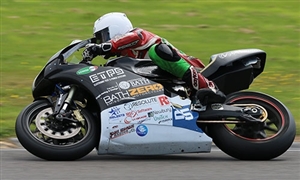It’s an exciting time for electric motorsport. It may still be in its early days, but it provides an opportunity for engineers to get stuck into new challenges, particularly around energy management and efficiency.

“What the sector is doing in terms of technology is very interesting, with electrification in all areas of powertrains and systems accelerating rapidly,” says Angus Lyon CEng MIET, Director of Rockfort Engineering and Executive Member of the IET’s Automotive and Road Transport Systems (ARTS) Technical and Professional Network (TPN).
“Motorsport is a competitive environment, but stepping into Formula E, the electric street racing championship, is a different domain – we’re literally chasing 0.1% efficiency!”
Working across sectors
Historically, motorsport has been quite guarded about technology transfer, as teams have wanted to develop that something that will give them the edge over their competitors.
However, in electric racing, the doors are inching open and people are beginning to share their work – both within the sector and further afield.
“Because the electric vehicles industry is still nascent, and the technology is so young, there’s a lot of development going on, not just in motorsport, but also in the automotive sector and even aerospace,” says Pete James, Director of Lyra Electronics and Past Chair of the ARTS TPN.
“The technology is being shared, and over time transferred back into motorsport after further development in the different sectors.”
It works both ways, with technology developed specifically for Formula E also helping engineers in the established automotive sector.
“We’re starting to see the know-how, some of the tools and simulation analysis developed for motorsport applications being used to help understand and develop road car applications,”
Angus points out.
“I’m also seeing more and more Original Equipment Manufacturers and Tier 1 companies getting involved in Formula E, because they recognise that this can help them speed up development cycles and use new technologies,” he continues.
“They understand that by learning how to use the technology, they can get ahead of the game and be ready to bring it into the mainstream automotive market when costs come down and volumes increase.”
 IET technical network at the forefront
IET technical network at the forefrontThe IET, and the ARTS TPN in particular, have closely followed electrification in motorsport from day one, having supported the MotoE electric motorsport championship since its inception in 2009.
Several IET members, including Pete himself, have contributed to setting and managing the standards. They’ve also attended events to check all bikes are safe to race and meet regulations, and offered independent advice when required.
Bringing together engineers from a variety of automotive industries, the TPN is a great example of knowledge sharing within the community. Many members of the TPN are actively involved in knowledge dissemination, giving lectures at local network events across the UK.
“Our group looks at many areas, from electric and autonomous vehicles through to internet security and infrastructure,” says Angus.
“It’s a great network and we collaborate both as IET volunteers and businessmen,” Pete says.
“We’re looking to write papers on our experiences and hold new events. There’s a lot of information dissemination and networking going on, as well as some professional collaboration.”
Visit the ARTS Network webpage at: www.theiet.org/automotive
